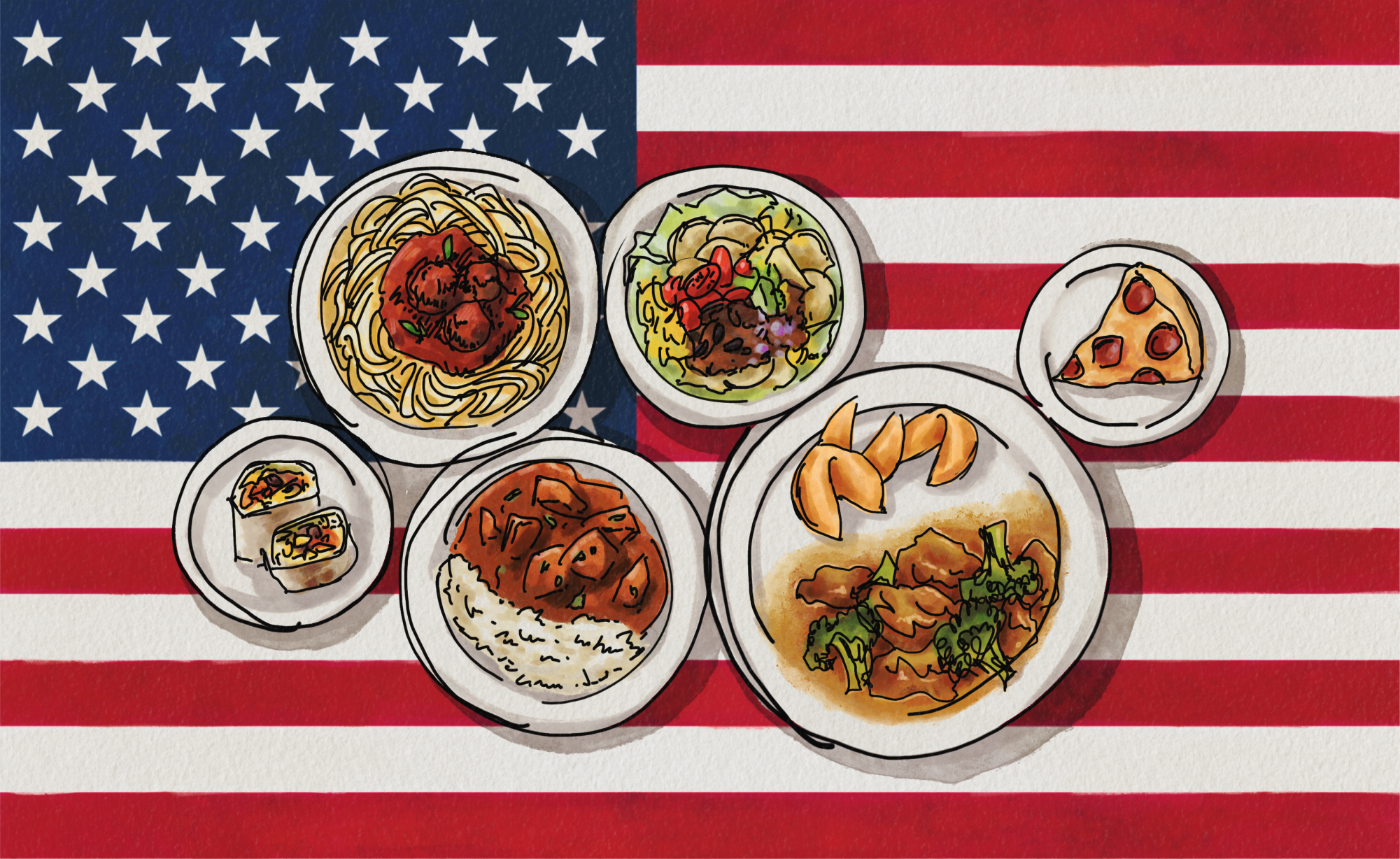As the sun beams directly over the plaza, a group of rowdy teenage boys stroll down the sidewalk, discussing where to grab food after a hard-fought soccer match. Stomachs growling, they scan the row of restaurants and list the three cuisine contenders — American, Chinese and Mexican.
Earlier this school year, my soccer team and I found ourselves in the same situation during an away tournament. As the debate got heated, I listened in.
“I want some good Chinese food, like orange chicken,” one of my teammates said. “Wait, orange chicken isn’t real Chinese food. Maybe I’ll eat beef and broccoli instead.”
As the group settled for Panda Express, I couldn’t help but smirk at my teammate’s comment. While orange chicken isn’t authentic Chinese food, neither is beef and broccoli — a blend of American taste with Chinese cooking techniques. But looking at the Panda Express menu, it could be hard for non-Chinese persons to discern the authenticity of an item.
From tater tots to buffalo wings to hot dogs, a number of famous dishes originate from the United States.
Many of these dishes also have backgrounds rooted in other cultures. General Tso’s chicken, for example, is a dish invented in Chinese-American restaurants, but most authentic Chinese restaurants don’t offer the dish.
With increasing demand for authentic foods, criticism of these “fake” dishes has risen. And it’s not just Chinese-American food — spaghetti and meatballs, taco salad and chicken tikka masala have all faced the same treatment.
In my experience, there certainly are distinctions between authentic and westernized foods.
Americanized food is generally meatier, sweeter and made with more convenient (unhealthy) cooking techniques. Additionally, most western Chinese food has Cantonese origins, since a lot of early immigrants were from the Guangdong region.
As a result, much of western exposure to Chinese foods are narrow in scope compared to the variety of flavors, styles and ingredients found in the various regions within the expanse of China.
But why label Americanized food as fake? Even though many Chinese-American restaurants don’t serve traditional Chinese cuisine, they don’t market themselves in that way.
Cuisines worldwide have adapted the foods and cooking techniques of other cultures. For example, both the egg tart found in Cantonese Dim Sums and the deep-frying technique used by the Japanese for the famous tempura dish can be traced back to Portugal.
Take a look at the American Dog in Japan. It captures the essence of the corn dog: meat skewered with a stick and dipped in cornbread.
But there are also differences. The fried batter, which is more cake-like, tastes incredibly sweet. Additionally, the Japanese use fish sausages, as opposed to the typical combination of processed pork, beef, chicken and turkey for corn dogs in the US.
But is the American Dog “fake” American food? No. It’s simply a localized interpretation from Japan, which introduces locals to food from other cultures. America is a melting pot of cultures, defined by its rich composition of traditions and identities. Its history of immigration contributes to its cultural blend, as migrants stretching across the globe mix traditional with American values.
For example, in music blues, jazz and hip hop all have roots in other cultures, yet they are embraced by American artists and audiences.
Food is no different; many dishes were created by immigrants, and others were invented by American-born citizens.
Italian pizza, Mexican tacos and Chinese stir-fry are all staples in the American diet, even though their recipes have been adapted to fit American appetites.
We can also see this in Palo Alto. At Town and Country, students are able to try a variety of cultural cuisines, ranging from American to Japanese to Mexican. Even if the chicken bowl at Sushi House lacks many traditional Japanese ingredients, it is still a student favorite. So let’s embrace Americanized food. When there is a real history behind the development of a dish, nothing about the food is fake.
It is time we hold our American creations as something of our own, not as an inauthentic ripoff of another culture.



